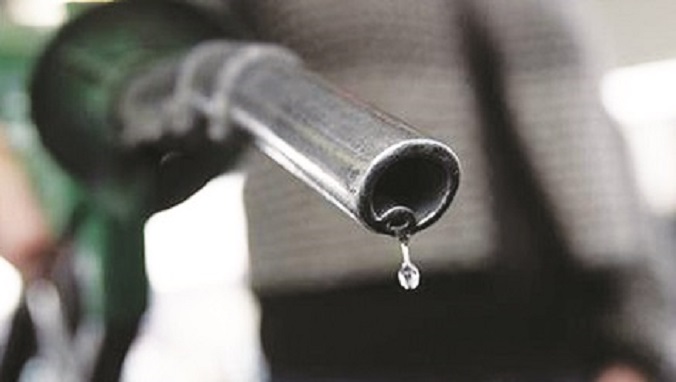News
Oil Spill Eater II Rings Solution to Oil Spill in Niger Delta

Oil Spill Eater II is the name of a non-toxic product which provides the means for moving oil spill response out of its 19th Century methodology into the realm of advanced technological 21st Century breakthroughs for addressing and remediating 100% of any spill in any environment. In comparison, current response methods employed by three major oil companies – BP, Exxon and Shell – are obsolete and obtain dismal results.
Most recently, BP, Exxon, and Shell have utilized mechanical clean up on the Gulf of Mexico Deepwater Horizon (DWH) oil blowout, the Yellowstone River oil spill in Montana, and the recent oil spill in the North Sea, respectively. Mechanical clean up in calm seas only has the capability of remediating somewhere between 2 and 8% of a spill; a woefully inadequate response.
Also utilized in the Gulf of Mexico blowout was Exxon’s outmoded invention Corexit, a chemical dispersant licensed to Nalco Holding Company for manufacturing and distribution. The label on this horrifically toxic dispersant clearly states it can cause kidney failure and death and the MSDS (Material Safety Data Sheet) specifically warns, “Do not contaminate surface water” with it. Additionally, toxicity testing in regards to marine species shows little tolerance by all forms of sea life; thus, applying it on spills as a preferred response method increases the toxicity of the spilled oil on which it is used.
The EPA’s Destructive Policies
The EPA (Environmental Protection Agency) requires that any dispersant product applying for inclusion in the Code of Federal Regulations National Contingency Plan Product Schedule of approved products for oil spill cleanup, known as the NCP list, undergo a dispersant test before permitting their use on spills in US navigable waters. A dispersant product must demonstrate that it causes a minimum of 45% of the oil to sink within 30 minutes, despite the fact that the NCP list states that it is illegal to sink spilled oil.
Hence, one of the US EPA’s illogical criteria for addressing a toxic spill is that it moves the oil into the secondary water column zone. This spreads the toxic contamination throughout the most vital area for marine life where at least 60% of marine species live. (The catastrophic results of this are being thoroughly documented in more and more science papers being released in 2011.) The purpose of cleaning up an oil spill is so that living organisms, even single-celled organisms, can survive. What is the logic, then, in adding Corexit, an even more toxic substance than the oil, to spread the contamination throughout the living environment of the majority of marine life species? A spill’s damaging impact should be limited, not purposefully expanded and moved into additional, secondary areas.
After a period of time, dispersants then cause the oil to sink to the seabed, adversely effecting bottom dwellers and wiping out entire species. The sunken oil then causes additional problems such as the depletion of oxygen from the water because so much carbon* has been loaded into the water column. Depletion of oxygen causes mass die offs (called fish kills) where enormous numbers of marine life are obliterated all at once from extreme lack of oxygen.
This, however, is not the end of the destructive onslaught of the chemical dispersant response. Next, the cleanup response to the DWH showed that, even when dispersants are applied up to 75 miles away from the shore, the oil can still, through underwater plumes, be delivered to the shorelines where even greater natural resource destruction then ensues in, yet, a third and unnecessary assault on natural resources by the same oil. The intertidal zone species – species that live in sand, rocks, and marsh habitats – become coated with oil and the life is suffocated out of these areas.
To be deemed effective by the US EPA, dispersants merely have to be capable of sinking oil, not cleaning it up. In fact, there is no “defined end point” (scientifically predictable end result) to the application of dispersants. Contrary to baseless media reports, a Woods Hole Oceanographic Institute study completed in March 2011 demonstrated that the oil is taking longer to degrade than expected and showed that it would have been better to do nothing, rather than spray/inject massive amounts of toxic Corexit on and into the Gulf waters. When one understands the natural processes by which Mother Nature cleans up an oil spill (how ever long it may take, left to her own devices) it becomes scientifically predictable as to why the application of Corexit has slowed down the oils natural degradation because the highly toxic dispersant kills and suppresses the naturally occurring microorganisms that would otherwise digest the oil and break it down into its non-toxic components. By destroying the natural microorganisms, it prolongs Mother Nature’s clean up time, needlessly extending the toxic impact of the oil and dispersant on the eco system.
Needless Health and Economic Consequences
An oil spill cleanup response that includes toxic dispersants only increases the number of areas negatively impacted and intensifies and escalates the adverse effects by the spilled oil. It causes large numbers of species to be wiped out of the water column, seabed, and intertidal zones. This, in turn, severely impacts commerce in the region associated with harvesting US navigable waters, and endangers tourism, and all geographically or economically associated industries.
As can easily be seen on the MSDS of both Corexits, they cause a wide variety of extremely serious physical ailments: severe respiratory problems; kidney and liver failure; internal hemorrhaging; skin lesions; sudden and severe dizziness and nausea; short-term memory loss; long-term, flu-like symptoms which do not resolve with standard flu treatment; severe eye damage; severe compromise of immune system; reproductive problems; and death.
The EPA has been negligent in the extreme to permit over 2 million gallons and more of this product to be sprayed and injected into the delicate eco system of the Gulf of Mexico.
Scientists tracking the Gulf of Mexico spill have proven that these dispersants have compromised thousands of responder’s health, as well as the citizens that live and work on the Gulf Coast from Texas to Florida. This devastation was easily predicted when one simply reads Corexit’s product labels.
Predictable but Downplayed “Trade Offs”
The EPA’s website states that there are “tradeoffs” with the use of Corexit/dispersants, although they do not clearly define what these tradeoffs are. If the American public had more fully understood that these tradeoffs were enormous natural resource damages, death and compromised health for untold numbers of responders and Gulf residents, with no positive benefit on the other side of the tradeoff, it is unlikely that this method of response would have been tolerated.
Economically, where is the logic of using a cleanup method with “tradeoffs” that only exponentially increase the cost of a spill’s cleanup response, especially when there is a non-toxic alternative, which has absolutely no tradeoffs?
There are currently fantastic costs mounting based on aggregating evidence that clearly shows the enormously exacerbated damages associated with this type of response. These unnecessary costs include, among others, litigation fees, damaged health, loss of life, shattered livelihood, disastrous social and community impact, entire populations and generations of marine life species decimated, long-term devastation to the environment. Given these far-reaching losses, toxic chemical dispersants should be immediately eliminated as an oil spill response method.
A Cost-Effective, Thorough Solution
Again, the reason it is important to clean up a spill is to reduce the toxicity to the environment and to reduce the time period over which living organisms are exposed to the toxic contamination so that they can survive. Toxic chemical dispersants destroy organisms, from the smallest microbes to the largest whales, and endangering wildlife and the public’s health, as well. Mechanical methods are utterly inept, leaving in place the majority of the spill, which increases the length of time the environment and marine life are exposed to the toxicity.
All of the above destruction to natural resources, human health, and the economy can be completely avoided. There has been an extraordinary technological breakthrough in the field of oil spill cleanup. Completely non-toxic and safe, it does exactly what Mother Nature does to clean up a toxic site. The only difference is what would take Mother Nature decades or centuries to clean up takes only a few weeks to achieve the same result, with absolutely no negative side effects. It is the only product in its field that is a first and only response method necessary to achieve 100% cleanup of an oil spill. It is a fraction of the cost of other antiquated solutions such as chemical dispersant and mechanical means. It has a scientifically proven, defined end point that it achieves once applied: it turns the oil into water and CO2. It causes absolutely no negative side effects or tradeoffs. It has effectively cleaned up over 16,000 oil spills in the past 23 years. And it is already on the EPA’s NCP list. It is called Oil Spill Eater II (OSE II).
Below are charts and bullet-points comparing OSE II to both mechanical means and dispersants in the following areas: effectiveness, toxicity levels, human health consequences, natural resource damage, cleanup costs, and the potential for creating expensive litigation and payouts.
Comparisons between OSE II, Mechanical Methods and Chemical Dispersants
Clean Up Potential
OSE II : 100% conversion to CO2 and water
Mechanical: A maximum of 2 to 8% of the oil is actually removed from the environment.
Dispersants/Corexits: 0% clean up. Their only predictable result is that they sink and spread toxic oil throughout delicate waters, causing destruction and the need for secondary clean up on shorelines (multiplying the clean up costs and damages)
Toxicity Issues
OSE II
A. Confines and limits toxicity to the original spill area: starts reducing
toxicity immediately upon application; prevents toxicity to marine and wildlife, humans, seabed, shorelines, marshes and estuaries.
B. Toxicity tests on OSE II by US EPA and foreign government show OSE II to be completely non toxic to fresh and salt water marine species.
C. One of the many official confirmations of this is that in 1989 OSHA wrote a letter stating there were no toxicological concerns with any of the OSE II ingredients that would pose a significant health risk to humans.
Mechanical The oil itself is toxic to the environment. Leaving 92 to 98% of the oil in the environment increases the toxicity to the water columns seabed, shoreline, marshes and estuaries, adversely effecting marine species, wildlife and humans, as well as all associated flora and fauna.
P7
Dispersants/ A. Increases the toxicity of the oil. Causes a variety of serious Corexits physical ailments and death to responders and citizens who are
exposed to the vapors, water, and oil where it has been applied, through inhalation or direct contact. Kills marine and wildlife species, destroys plants and all associated flora and fauna. Spreads the dispersants’ and the oil’s toxicity throughout the water column, eventually sinking it to the seabed, much of which then moves into the intertidal zones.
B. EPA toxicity tests show both Corexit products to be very toxic to marine species, and show they increase the toxicity of oil to the marine environment.
C. The product’s label states that Corexit causes kidney failure and death and the MSDS of it’s most toxic component, 2 butoxy ethanol (which comprises, by volume, 60% of Corexit) details dire human health consequences when exposed to it. It has been shown that the use of Corexit on the Valdez spill compromised and shortened the lives of thousands of responders.
Human Health Consequences
OSE II Can be handled without any adverse health consequences as proven during the Megaborg spill when a small amount of OSE II was ingested on Houston Channel 11 News. OSE II reduces to just a few days the time frame during which a spill will have toxicological effects on humans, marine, wildlife, flora and fauna. OSE II’s official Material Safety Data Sheet shows it to be completely safe for human contact, and for the environment.
P8
Mechanical Allows 92 to 98 percent of a spill to spread and linger for years, exposing humans that work and play in water settings and intertidal zones, to be continually exposed to the toxicity of the oil for years.
Dispersants/ Corexits Dispersants cause parts of the oil to gas off, putting the oil and distillates and 2 butoxy ethanol (the most toxic chemical in Corexit) into the atmosphere, compromising human health and vegetation inland upon which it falls through rain and evaporation/condensation. Dispersants attach to oil and sink the oil into the water column where humans swim, dive, snorkel, or stand in the water, or come in contact with it from spray from waves on beaches or shorelines. Direct contact by accidental spraying when atomized dispersant drifts onto responders compromises health. Exposure causes severe respiratory problems; kidney and liver failure; internal hemorrhaging; skin lesions; sudden and severe dizziness and nausea; short-term memory loss; long-term, flu-like symptoms which do not resolve with standard flu treatment; severe eye damage; severe compromise of immune system; reproductive problems; and death.
Natural Resource Damage
OSE II Prevents natural resource damage by preventing the oil from contaminating secondary areas. It does this by eliminating the oil’s adhesive properties so that it will not stick to anything, including marine species, wildlife, sandy beach, rocks, marsh grass or other vegetation, sediment, humans, as well as boats, booms, nets, etc. All are then protected from the toxicity of the oil.
P9
Mechanical Allows 92 to 98 percent of the sticky oil to destroy natural resources and allows the lingering toxicity of the oil to spread widely throughout the eco systems and environment.
Dispersants Increases the oil’s adverse impact on natural resources, and the
Corexits highly toxic dispersant adds to the destruction, spreading the spill to water columns, sea floor, shorelines and intertidal zones, adversely effecting all of these additional areas, and adding unnecessary costs to a spill event.
Litigation
OSE II Prevents litigation by causing oil to float up out of the water column and seabed (while still making the oil very difficult to see). This also allows marine species to escape the spill by swimming under and away from it. Because OSE II eliminates the oil’s adhesion properties, it cannot adversely affect intertidal zone flora and fauna, and this prevents loss of jobs in the areas of
tourism and seafood harvesting and marketing, which protects the spill area’s economy. Human health is protected. All these litigation points are eliminated or reduced dramatically.
Mechanical Creates massive potential for litigation since 92 to 98 percent of the spill is allowed to affect the water column, seabed, flora, fauna, intertidal zones, and humans associated with the shorelines.
Adversely effects the economics of tourism, harvesting and marketing seafood, and compromises human heath. All these
areas, and more, are potential litigation points that occur from oil spill events.
P10
Exponentially increases the potential for litigation since they unnecessarily exacerbate and spread the oil’s impact to endless secondary areas, killing marine species, sinking oil eventually to the seabed, killing bottom dwellers, coral and other flora and fauna, which, in turn, adversely effects the harvesting of sea food, kelp and other flora. Allows oil combined with the more toxic dispersant to contaminate intertidal zones, shorelines, flora and fauna, adversely effecting human health, as well as tourism.
If for no other reason, the cost of litigation due to the use of dispersants should put them into the category of a completely unviable option for decision markers involved with a spill event.
———————–
The use of mechanical methods and or dispersants has proven in the Gulf of Mexico on the BP Deepwater Horizon spill to increase the spill’s damaging impact on natural resources, cause the death of millions of marine and wildlife, heavily damage the economy in the northern Gulf shore States, and compromise the health of the responders and the public who live along the Gulf. It has heavily impacted the seafood, tourism and recreational industries throughout the entire Gulf. BP has needlessly spent billions of dollars on cleanup methods that are ineffective, and which, in turn, only increase resource damage and cause cleanup costs to spiral even higher by having to address the same oil when it comes ashore a second time. It has lead to the filing of thousands of lawsuits against BP.
Cost Comparison
Comparing costs of oil spill cleanup between OSE II, mechanical methods and dispersants/Corexit, it is easy to see which spill response tool is far superior to any other oil spill cleanup method. As of April 2011, BP reported to their stockholders that it has spent between 26 to 28 billion dollars on the DWH spill. In early September that number was updated to 42 billion dollars. This necessitated the suspension of stock dividends in having to set aside $41 billion for potential predicted costs for the spill at that time. The OSEI Corporation does not know exactly how much BP has actually spent on this spill and the breakdown of those costs; however, BP has reported spilling 200 million gallons of oil between April 20th and July 23rd, 2010, so for comparison purposes we will use this figure, with the understanding that these figures are somewhat hypothetical. Nonetheless, the point below is clear, despite the fact that the amount of actual oil spilled and/or monies paid out by BP may not be accurate.
Per BP’s reports, $42 billion had been spent as of April 2011 for 200 million gallons of oil. When one divides $42 billion by 200 million gallons, it comes to a cleanup cost of $210 per gallon of oil spilled using a combination of Corexit dispersants and mechanical clean up methods. This does not include any of the current or future litigation costs, litigation pay out, or natural resource damage costs, which will be in the hundreds of millions to billions of dollars.
The OSEI Corporation has determined, through contractors, that the cost to apply OSE II is approximately $2 per gallon of oil spilled in the Gulf. (The OSE II cost per gallon of oil cleaned up would be slightly more in other countries.) When you take into account deployment costs, our calculations show that for each gallon spilled it would require $4 to convert 100% of the spilled oil to CO2 and water, depending on how fast OSE II is applied. 200 million gallons times $4 equals $800 million. This means that, had BP used OSE II as its first and only response tool, it would have saved BP $41.8 billion on the Deepwater Horizon spill.
The low cost of application is due to the fact that the spill is very large, whereas with smaller spills the initial response causes the cleanup price per gallon of oil spilled to be higher. Despite this, in 2000 the US Navy performed a cost analysis between their use of OSE II, and their earlier, inadequate oil cleanup responses with mechanical equipment. They found that, with the mechanical methods, they were paying around $92 to $96 to clean up each gallon spilled. When they switched to OSE II, the Navy documented that they had cut their cleanup costs down to $12 per gallon of oil spilled, effectively reducing their clean up costs by 87% for each gallon spilled. This, while successfully addressing 100% of each spill, compared to the earlier methods they had used which only addressed about 5% of the spill, allowing the rest of the spill to adversely effect the environment.
If BP achieved an 87% reduction of their costs for the DWH blowout this would mean reducing their current costs down from $210.00 per gallon spilled to $27.30 per gallon spilled. Using OSE II would have saved BP $36.5 billion dollars, while dramatically reducing potential litigation costs and payouts.
Another Example of Wasted Funds and Lost Profits for an Oil Company
Exxon’s pipeline break under the Yellowstone River in the summer of 2011 released at least 42,000 gallons of oil into the environment. Exxon responded originally with 345 laborers with chemical suits, gloves, and absorbents that looked like paper towels. In a few of the affected areas, Exxon trapped some of the oil on the river and tried to skim it, reclaiming, at most, about 5% of the oil and collecting a lot of contaminated water, which then requires is own secondary clean up procedures, adding even more unnecessary cost to the cleanup. The contaminated absorbents then had to be collected, taped up with duct tape, and piled up for their secondary clean up process as well.
The spill initially contaminated approximately 20 miles of shoreline, predictably upsetting Montana residents and stakeholders. Because Exxon continued the inadequate response with absorbents and mechanical clean up, the spill then contaminated over 240 miles of shoreline. The natural resource damage fees will be exponentially more than they ever should have been. And only a small fraction of the oil will ever be cleaned up in this way, leaving behind a contaminated mess, lowered property values, health risks to the public and wildlife, and an even lower level of public confidence that the oil companies can responsibly handle any of their inevitable accidents. In early September 2011 it was reported Exxon will spend 42 million dollars for this very small spill!
Compare this to what would have occurred had OSE II been utilized instead. The clean up cost with so much labor and equipment could have been reduced to a couple of water trucks on the shoreline driving to the areas they could reach by road and simply deploying OSE II from the shore. The spill itself would have required four water vessels with OSE II staged on them with simple ejection systems to apply OSE II. Two of the vessels could have been set up just past the spill migration point, addressing oil as it moved down the river preventing the oil from migrating past their staged area. Two more vessels could have started at the source of the spill and moved down the river applying OSE II on each shoreline and in the water, until these vessels reached the staged vessels preventing further migration.
The four vessels and two water trucks would have required a total of 24 employees, and could have addressed the entire spill in a matter of days, reducing damages, contaminated shoreline, labor costs, and preventing any secondary clean up problems. There will inevitably be litigation and fines, most of which could have been limited or prevented. The estimated cost with the OSE II response is between 800,000.00$ and $1.2 million, a huge difference just by changing to a more effective non toxic response OSE II.
Summary
There is a clear choice when it comes to oil spill response. On one side you have the antiquated, inadequate response methods with toxic dispersants and mechanical means. To their discredit, dispersants clean up 0% of the oil but, instead, merely sink it, increasing damages and adverse impacts, and extending and exacerbating secondary clean up problems. Similarly ineffective are mechanical means. At their very best, they clean up 2 to 8% of the oil, allowing 92 to 98% of the spill to adversely impact the environment. Both responses cause extensive natural resource damage, compromised public health, death of marine and wildlife, destruction of flora and fauna, adverse impacts on the economy of the area, and prompt expensive fines. All of the above provides endless opportunities for extremely costly litigation. Both dispersants and mechanical clean up methods are extremely expensive and are fundamentally ineffective if the purpose is to actually clean up the oil. In fact, with regard to toxic dispersants, it would be far better to do nothing at all, rather than create further destruction through their use.
On the other side is a cutting-edge, non-toxic, first response technology which provides a highly economical means to address spills and limit clean up costs, prevent and/or dramatically limit damages to natural resources, marine and wildlife, the economy, and the public’s health, and thereby avert and/or markedly lessen the potential for litigation. With dozens of official scientific studies and reports validating its safety and effectiveness, and the empirical results of over 16,000 effective oil spill cleanups since 1989 with no adverse side effects reported of any kind, OSE II is the clear choice for oil spill cleanup.
Lowered Public Resistance to Drilling
The successful use of OSE II would allow the responsible party of a spill to not only improve its public relations with the public and governments, but it would engender heightened confidence that, when the inevitable, occasional spill occurs, it can be efficiently and thoroughly cleaned up leaving little damage and ill will in its wake. The public perception of oil spill response today, and rightly so, is that a spill is going to create long-term devastation to the area in which it occurs. Repeated examples of the devastation resulting from the use of antiquated response methods – dispersants and mechanical means – have shaped the public’s opinion.
OSE II would allow the responsible parties of an oil spill to 1) meet their fiduciary obligations to their stockholders, 2) comply with their governance policies, 3) protect the natural resources, and the public’s health, safety, and welfare in those areas in which they are operating, and 4) quickly return a spill area to pre spill conditions while reducing cleanup costs.
OSE II is the clear economic choice when it comes to oil spill response; the numbers prove it.
Steven Pedigo is Chairman/CEO OSEI Corporation
oseicorp@msn.com
011 972 669 3390
News
FG to Create 1m Technology Jobs – Minister

Bosun Tijani, minister for Communication, Innovation and Digital Economy, has stated that the federal government is geared towards creating about one million technology jobs for teeming Nigerian youth.

Tijani stated this at the official opening of a solar-powered community ICT center built by the National Information Technology Development Agency (NITDA) in Abeokuta, as part of activities marking the 38th Lisabi festival.
The minister emphasised the commitment of President Bola Tinubu’s administration to invest in the digital economy, driving inclusive growth and empowering the country’s teeming youth population.
“The president made it very clear when I came into office, that he will spend efforts and resources in creating one million technology jobs. So, for anybody that is following the development in the world today you will see that there’s no world without technology.
“There is a strong shortage of technology workforce all over the world, and while a lot of the developed countries have ageing population, and not giving birth to kids, in Nigeria, the average age is 16.9, so our young people are being projected to be the workforce of the future, not only for Nigeria.
“This center here is one of many. In the next two months, we are launching about 30 of them all over the country. This center will be properly animated and we will put resources into ensuring that there are courses for young people to come and take here.
“We are also going to ensure that there are job opportunities that we can connect them to and if anyone wants to follow, follow the three million Technical Talent Program which we have started already in the country”, he said.
He therefore charged the youth to remain focus, and not be discouraged, adding that there is massive employment opportunities in technology as there is no enough people to work in technology all over the world.
“If you ask anyone that works in technology, the entry salary is between N350,000 to N500,000. Technology pays really well, so instead of worrying about things being hard, they should take advantage of centers like this, empower themselves and go for the opportunities the world has to offer them”, he added.
Speaking earlier, Oba Adedotun Are, Alake and Paramount ruler of Egbaland, lauded President Tinubu for approving the centre in Abeokuta, saying that this has no doubt marked another new dawn for the people of Egbaland, given rapid growth, development, and economic empowerment of the people.
News
NIPSS Projects Petrol Prices to Hit ₦750/Litre Before Year’s End!

National Institute for Policy and Strategic Studies (NIPSS) has predicted that the price of Premium Motor Spirit (petrol) will decline as Dangote Refinery and other local refineries commence full operations.

Speaking on Channels Television on Tuesday, April 1, NIPSS Director-General Ayo Omotayo expressed optimism that fuel prices would fall once more refineries become operational.
He projected that petrol prices could drop to around N750 per litre before the end of the year with a more stable exchange rate.
“We’re looking at it coming down as low as N750 before the end of the year. And of course, foreign exchange will still drop to about 1.3 before the end of the year, and it is going to continue like that as more of our refineries come into place.
Omotayo acknowledged the current economic hardships but insisted that the policy would benefit Nigerians in the long run.Traditional Nigerian cuisine
“The gains at this time are very little, but in the long run, we will make up for whatever sacrifices we have made today as Nigerians” he stated
News
TikTok Sale Deal Expected Before April 5 Deadline – Trump

U.S. President Donald Trump has stated that a deal for the sale of TikTok’s U.S. operations is expected to be finalized before the April 5 deadline.

U.S. President Donald Trump
The deadline, set by legislation passed in January, mandates TikTok’s Chinese parent company, ByteDance, to divest its U.S. assets or face a nationwide ban due to national security concerns.
Multiple non-Chinese firms have expressed interest in acquiring TikTok’s U.S. operations.
Private equity firm Blackstone is considering a minority investment, potentially joining existing non-Chinese shareholders such as Susquehanna International Group and General Atlantic.
In a strategic move to facilitate the sale, Trump suggested that he might consider a reduction in tariffs on China, acknowledging that Chinese regulatory approval may be required for the deal to proceed.
The White House has been actively involved in negotiations to ensure that TikTok remains operational in the U.S. while addressing national security risks.
With TikTok’s 170 million American users watching closely, the outcome of the sale is expected to have a major impact on the social media landscape and the broader tech industry.

 Telecom3 days ago
Telecom3 days agoMTN, Lynk Global Make Africa’s First Satellite-to-Mobile Call

 E-Business3 days ago
E-Business3 days agoSystemSpecs’s Subsidiary Deelaa Becomes Whatadeal

 E-Financial3 days ago
E-Financial3 days agoNigeria Gets Fresh $500m World Bank Loan for Economic Stimulus Programme

 Broadcasting2 days ago
Broadcasting2 days agoDStv Revenue Plunges as MultiChoice Loses Nearly 4m Subscribers

 General News3 days ago
General News3 days agoSERAP Asks National Assembly to Drop Bill to Jail Nigerians who Fail to Vote

 E-Financial3 days ago
E-Financial3 days agoUninsured Depositors of Heritage Bank to Receive Liquidation Dividends In April – NDIC

 Telecom3 days ago
Telecom3 days ago15-Year-Old Autistic Artist, Kanye, to Unveil World’s Largest Art Canvas on Autism Awareness Day

 Telecom3 days ago
Telecom3 days agoSmart Treasure Investment Team’s Initiatives Eradicate Poverty, Says Aminu





















